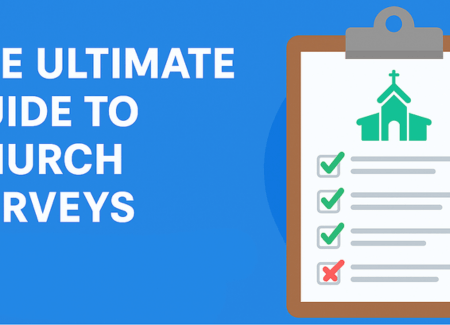4 Essential Strategies for Church Planting
Some church plants flourish, while others fade too soon. The difference often comes down to one thing: how well you plan.
Every church once was a small group of believers with a shared vision. Then, it expands to outreach, discipleship, and leadership growth. Planning is the core foundation. Because without direction, no organization can stand tall long enough. Fortunately, the right strategy and tools can support new churches to reach more people.
This guide breaks down how church planting can be effective. You’ll learn what it means, why a solid strategy is important, and which tools can make the process easier.
Step 1: Understand What Church Planting Actually Means
Church planting refers to the process of starting a new local church. In other words, it’s about gathering a community of faith that extends beyond Sunday services.
First, you need to have leaders and form teams, then reach out to people who may not attend church otherwise. The intention is simply to create a healthy, self-sustaining church that can make an impact in its neighborhood. Key parts of church planting include:
- A vision and mission
- Committed leaders and volunteers
- Consistent outreach
- Financial planning
- Prayer and patience
Just stay focused on people instead of programs, and church planting will grow naturally.
Vision and Mission
Make it clear who you want to reach and what your church believes in. Keep it simple. A straightforward, strong mission enables your team to stay on track and measure progress accordingly.
Leadership and Teamwork
Appoint leaders as early as possible. Ideally, pick individuals with different skills, such as teaching, worship, community outreach, and admin.
Also, ensure teamwork all the way through regular meetings and shared workload. This keeps your church plant steady and prevents burnout.
Step 2: Build a Strategy for Growth
Growth is impossible without a solid strategy that accounts for time and resources and provides direction. An effective growth strategy for church planting should answer 3 main questions:
- Who are we trying to reach?
- How will we reach them?
- What will help us grow?
Maintaining a Steady Growth
You must know the people you’re reaching on a very deep level, not as a community. Talk to people, visit local spots, and learn what’s missing. After that, design your services and programs around those needs.
Keep track of attendance, volunteers, and giving every month. Stay consistent and review your plan whenever necessary. Most effective outreach methods are:
- Visit homes and meet people face-to-face.
- Organize local events or community drives.
- Use social media to share updates.
- Start small groups where people can connect.
- Follow up after every visit or event.
Discipleship and Leadership Development
Show people that they are seen and heard by inviting them back and offering a precise next step.
For example, offer classes, mentoring, or small groups. Urge them to take the lead and serve. Your church can thrive with continuous discipleship pathways.
Financial Planning
Write down your launch expenses, rent, and costs. Track giving from day one and use simple software for budgeting and reporting. A clear financial plan is the only guarantee your church will continue to function well after the first year.
Step 3: Use Affordable Tools to Stay Organized
The right tools make church planting less daunting. Expensive systems are not necessary. There are reasonably priced, really useful tools available. So, you can save time and reduce stress at the same time.
What Tools Should you Start with?
- Attendance tracking: Know who’s coming back each week.
- Volunteer scheduling: Keep your team organized and informed.
- Donor management: Track giving and send thank-you notes.
- Communication tools: Stay connected through SMS or email.
- Event management: Handle signups and follow-ups.
- Small group tools: Manage groups and track participation.
Combining these will give you everything required to manage your church efficiently.
Picking the right tools
Choose tools that are:
- Easy to learn
- Affordable or free to start
- Mobile-friendly
- Scalable as your church grows
Avoid complicated software that takes too long to learn. The simpler the tools, the faster your team will use them.
What to track
Track these numbers weekly:
- Attendance
- New guests
- Giving
- Volunteer hours
- Group growth
Accurate data facilitates progress tracking and strategy modifications.
Step 4: Let ChMeetings Support Your Church Planting Journey
ChMeetings allows you to seamlessly plan, track, and grow your community. For new church plants, it brings everything together, including people, events, groups, volunteers, and giving.
ChMeetings is even suitable for small budgets and growing teams. It’s flexible, simple, and fits churches at any stage.
How ChMeetings Helps
- Schedule volunteers and send reminders
- Track attendance and new visitors
- Manage small groups and member details
- Organize events and check-ins
- Send messages or emails
- Create reports for giving and engagement
- Track giving and link donors to projects
- Generate finance reports.
Everything stays in one place, which saves time and avoids confusion.
Church planting takes both faith and focus, but it’s certainly worth all the work. Affordable platforms like ChMeetings keep you organized while emphasizing people and growth. Start small, track progress, and adjust as you go.












